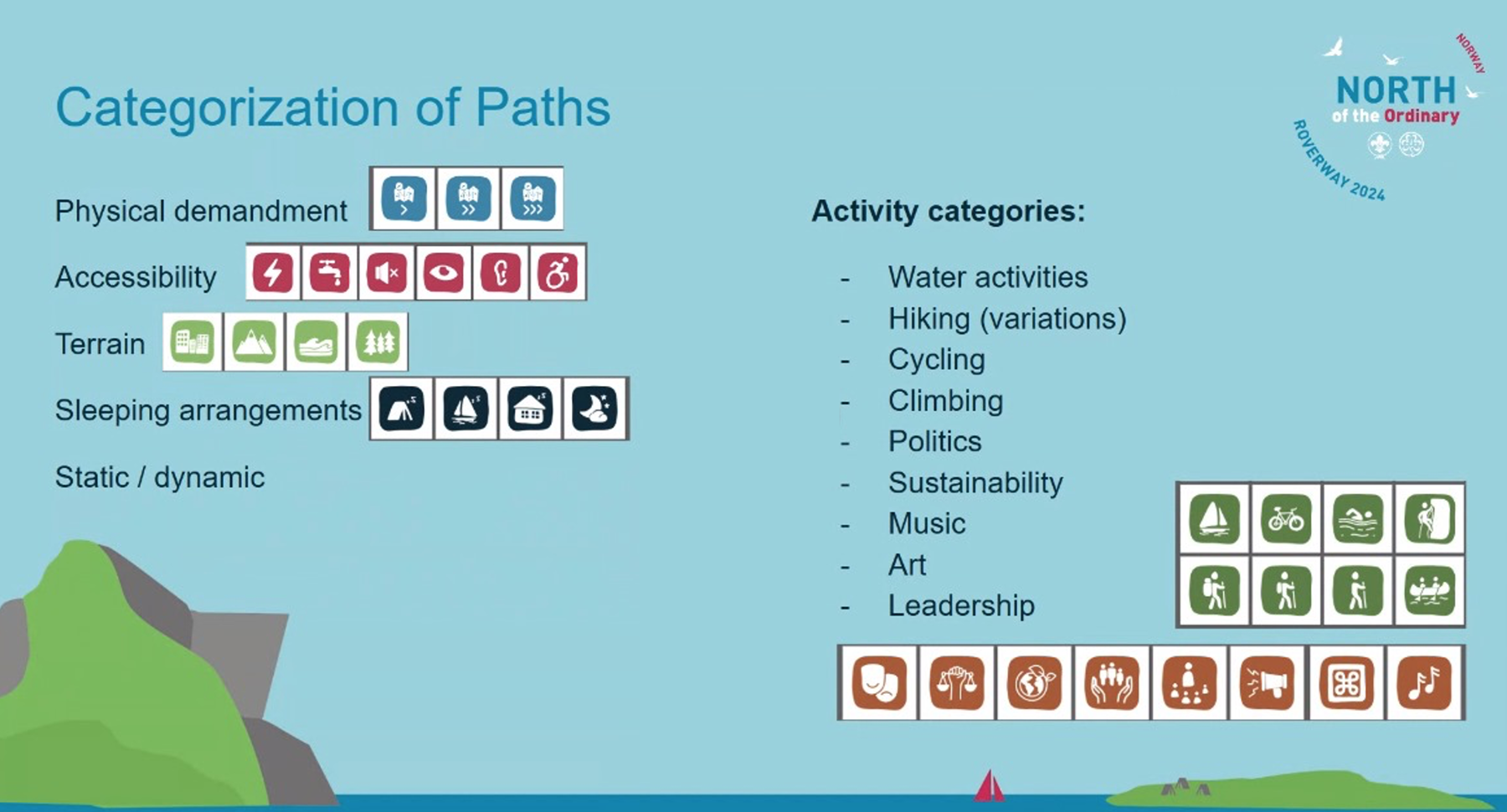Path selection
How to submit your patrol's preferences
Quick links
From 22-27 July, your patrol will explore a 'path' in Southern Norway, Denmark or Sweden. This is the start of your Roverway 2024 experience.
You'll join around 5 patrols from other countries, under the supervision of Norwegian Scout volunteers and International Service Team (IST).
One of the highlights of Roverway is the opportunity for young people to truly shape their experience – and with up to 100 paths, there'll be something to suit everyone's interests.
How the preference process works
Each path is labelled across several categories. You'll need to discuss these with your patrol to decide on your collective preferences.
Your Patrol Leader will then submit these to the UK Contingent using an EventsAir form.
After we pass these on to the Norway planning team, they'll allocate your path based on your preferences.
What are the categories?
You'll need to give preferences for 10 categories in total. First you'll need to decide if you'd prefer a static (staying in one place) or dynamic (moving from place to place, carrying at least some kit) path.
For the next three categories, you'll have several options to rank. You'll need to rank all options by putting them in your order of preference.
- Physical activity level - Easy, Moderate, Challenging or Very challenging (you'll find descriptions of each of these on the form)
- Terrain - Forest, Mountains, Ocean/Coast, Urban or Cultural landscape
- Sleeping arrangements - Boat, Indoors, Open air/shelter, Tent
Next, you'll have several checkboxes for accessibility requirements. If any member of your patrol requires one of these, you'll need to tick that box.
- Require electrical power (for the whole path)
- Require accessibility for hearing-impaired people
- Require access to quiet room
- Require accessibility for visually impaired/blind people
- Require access to running water throughout the whole path (do not select if the patrol can carry drinking water for part of or the whole path)
- Require accessibility for a wheelchair
- Can complete a path in Denmark or Sweden (do not select if the patrol can only complete a path in Norway)
Next, there are checkboxes for skills and experience. Only tick these if your patrol meets the relevant standard.
- Cycling - everyone in the patrol has cycling experience
- Hiking - everyone in the patrol has hiking experience (multiple day expedition)
- Navigation - at least 2 members of the patrol have navigation skills (like map reading and use of a compass)
- Swimming - everyone in the patrol has swimming skills
Finally, you'll be able to rank 12 activities to really shape what you'll get up to on your path.
Rank the following in preference order. All options must be ranked.
- Cycling
- Climbing
- Sailing
- Hiking
- Hiking with heavy backpack
- Canoeing
- Politics and Activism
- Sustainability
- Cultural and Historical
- Peace and Equality
- Personal Development
- Creativity

Take a look at some examples
Paths are gradually being released on the Norway planning team's website.
Using the category filters, you can see the sort of paths and activities that you could be allocated depending on the preferences you submit.
How to choose
It might be tricky for your patrol to agree on all of these categories.
Here are a few steps to guide your discussions:
- Start talking! Get together for an online call or in-person meet-up to discuss your individual thoughts.
- Take a look through the list of available paths to see what the categories mean.
- Think carefully about the difference between a requirement and a preference. Make sure accessibility for all patrol members is at the considered first.
- You could try a blind vote (using free online software like StrawPoll) where there isn't a clear consensus.